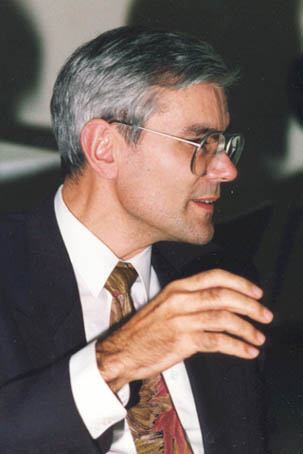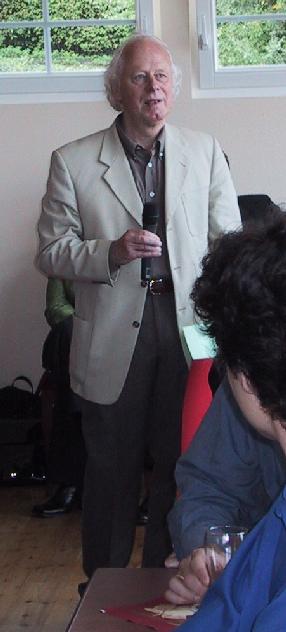I am interested in the spectroscopic characterization
of small, often very reactive molecules,
particularly those of atmospheric or astrophysical and astrochemical interest.
Spectroscopic Techniques
The spectroscopic techniques include rotational as well as low and high resolution infrared spectroscopy. And as a chemist, I am not afraid of synthesizing these molecules on a preparative scale or in situ. Throughout my scientific career, force field and quantum chemical calculations (ab initio, DFT) played an important role. Some more detail are in the following sections.
Initially, I have studied mathematics and chemistry to become a teacher. During universitiy years, the emphasis was on mathematics, while it was on chemistry during the practical period in school.

Universität Hannover, Germany
I began the studies to get my PhD in chemistry at the Universität Hannover, Germany, in 1988. I worked in the group of Prof. Helge Willner in the inorganic chemistry institute. The main objectives were the sythesis and characterization of chlorine oxides, preferrably those which may play a role in atmospheric chemistry and which were not known experimentally at that time. Using a halogen exchange reaction, I was able to obtain chloryl chloride, ClClO2 for the first time.


Jet Propulsion Laboratory (JPL), Pasadena, CA, USA
From spring 1995 to summer 1997 I obtained a stipend from the National Research Council to work at the Jet Propulsion Laboratory (JPL), Pasadena, CA, USA, as a NASA-NRC Resident Research Associate. While you may well know that JPL is heavily involved in NASA's unmanned space missions, it also an important place for Earth sciences, including atmospheric chemistry.

